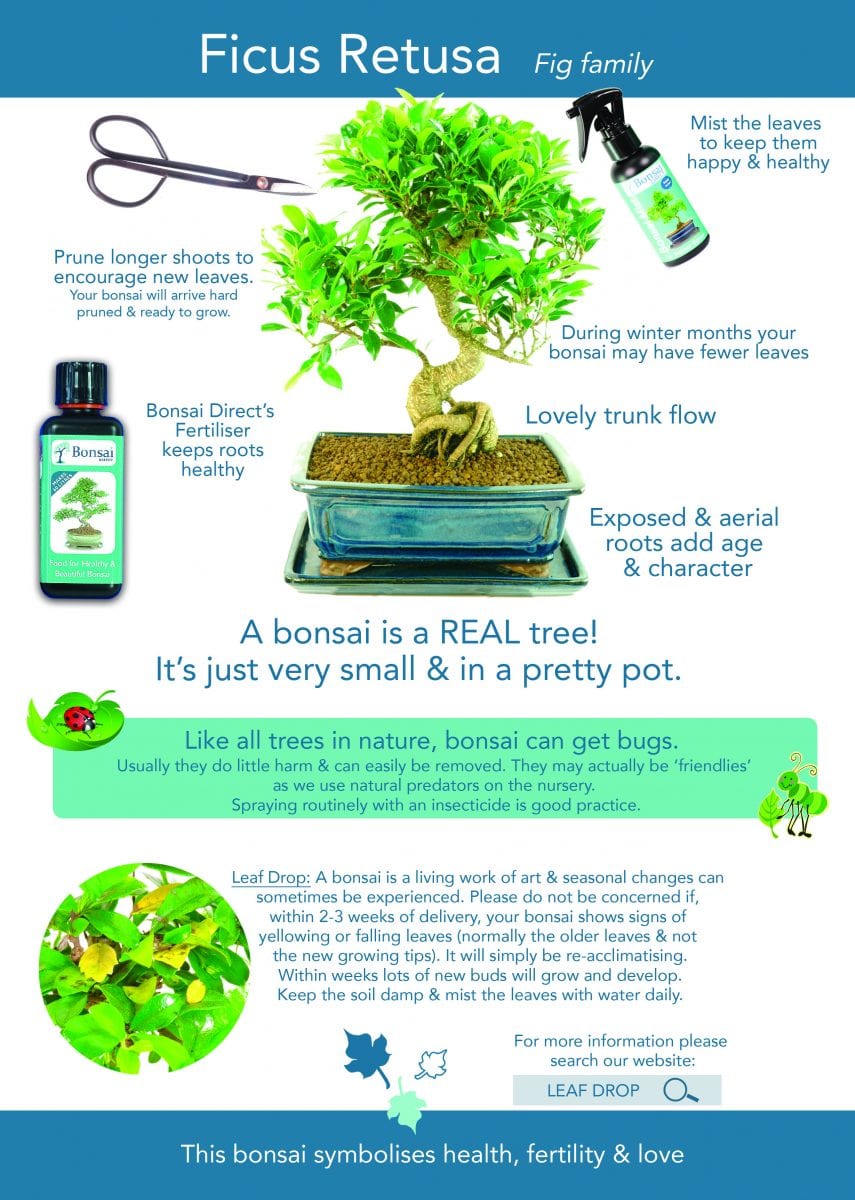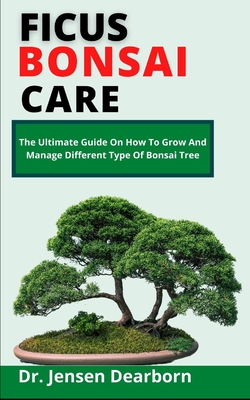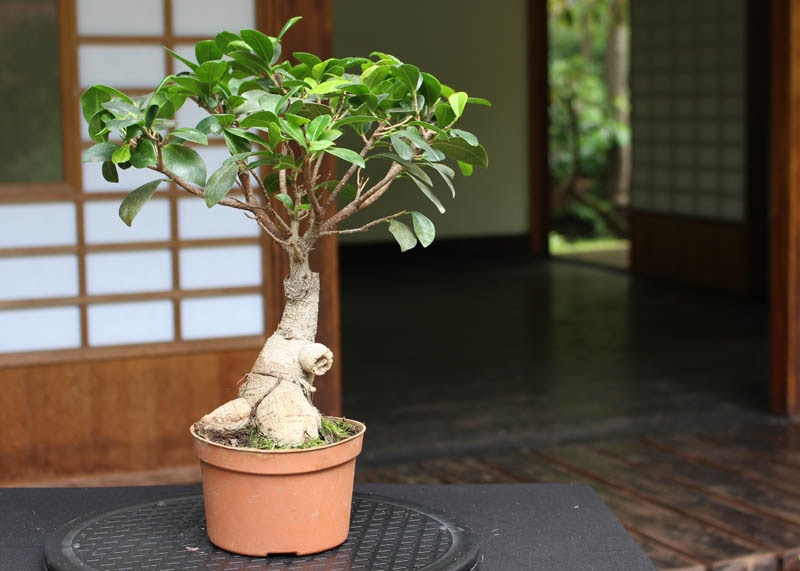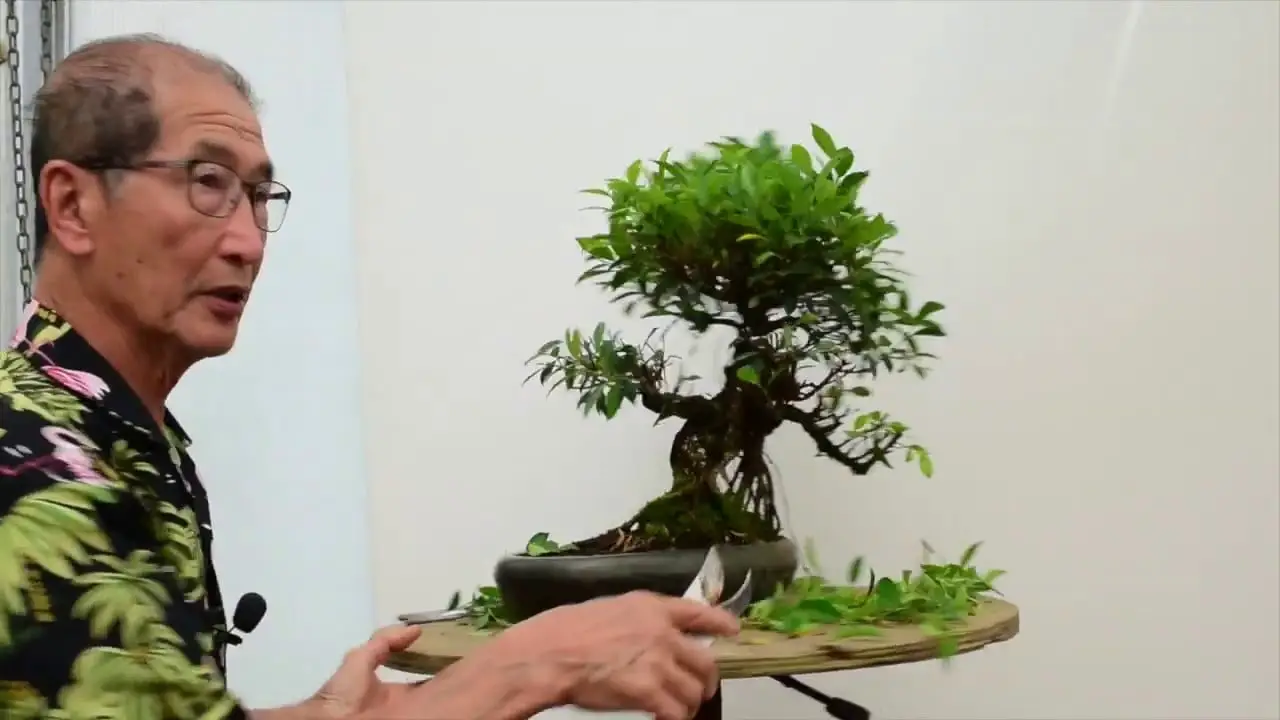Taking care of a Ficus Bonsai can be a rewarding and fulfilling experience for any plant lover. From selecting the right Ficus Bonsai to ensuring proper watering, pruning, and maintenance, this comprehensive guide aims to provide all the necessary information for successfully nurturing this miniature tree. Whether you’re a beginner or an expert, this article will cover unique strategies and techniques, incorporating expert opinions and research from credible resources. So, if you’re ready to dive into the fascinating world of Ficus Bonsai care, let’s get started!
Watering
Frequency of watering
When it comes to watering a Ficus Bonsai, it’s important to strike the right balance. Overwatering or underwatering can be detrimental to the health of the tree. The frequency of watering largely depends on factors such as the size of the pot, the type of soil used, and the current environmental conditions.
As a general rule of thumb, it’s recommended to water the Ficus Bonsai thoroughly when the top inch of the soil feels dry to the touch. This ensures that the water reaches the roots and provides proper hydration. However, it’s crucial not to let the soil become waterlogged as this can lead to root rot.
Methods of watering
There are a few different methods of watering that can be employed to ensure the Ficus Bonsai receives the right amount of water. One popular method is submerging the pot in a container of water and allowing the roots to absorb the moisture. Another method is to use a watering can with a fine nozzle to deliver a gentle and even stream of water directly to the soil surface. It’s important to avoid watering the foliage excessively as this can promote fungal diseases.
Signs of overwatering
Overwatering is a common mistake made by bonsai enthusiasts and can have detrimental effects on the Ficus Bonsai. Some signs of overwatering to look out for include yellowing or wilting leaves, mold or fungus growth on the soil surface, and a strong odor emanating from the soil. Additionally, if the roots appear brown, mushy, or have a foul smell, it’s likely that the tree has been overwatered.
Signs of underwatering
On the other hand, underwatering can also pose a threat to the health of the Ficus Bonsai. Signs of underwatering include drooping or wilting leaves, dry and brittle foliage, and soil that has become compacted and separates from the pot edges. In severe cases, the leaves may turn brown and fall off. It’s important to note that these symptoms can also be indicative of other issues such as insufficient light or nutrient deficiencies.
Lighting
Ideal lighting conditions
Proper lighting is vital for the health and growth of the Ficus Bonsai. These trees thrive in bright, indirect light and should ideally be placed near a window that receives sunlight for at least four to six hours a day. However, it’s important to avoid placing the bonsai in direct sunlight, especially during the hottest hours of the day as this can scorch the leaves.
Indoor vs. outdoor placement
Ficus Bonsai can be grown both indoors and outdoors, but the lighting requirements differ. When grown indoors, it’s important to choose a well-lit area that provides the bonsai with sufficient light. Supplemental lighting may be necessary, especially during the winter months when natural light is limited.
If placed outdoors, it’s essential to find a spot that offers a balance of sunlight and shade. Direct afternoon sun exposure may be too harsh for the Ficus Bonsai and can result in leaf burn. It’s also important to protect the bonsai from strong winds, as they can dehydrate the tree.
Supplemental lighting
In situations where natural light is limited, supplemental lighting can be highly beneficial for the Ficus Bonsai. Grow lights, such as fluorescent or LED lights, can provide the necessary spectrum and intensity of light needed for healthy growth. These lights should be placed above the bonsai, ensuring they are positioned at an appropriate distance to avoid heat damage to the foliage.

Temperature and Humidity
Ideal temperature range
Ficus Bonsai are generally resilient and can tolerate a range of temperatures. However, they thrive in temperatures between 60°F (15°C) and 75°F (24°C). It’s important to avoid exposing the bonsai to extreme temperatures, especially frost or freezing conditions, as this can cause irreparable damage.
Protecting from extreme temperatures
To protect the Ficus Bonsai from extreme temperatures, it’s recommended to bring the tree indoors during cold winter months. If left outside, it should be placed in a sheltered area away from cold drafts and harsh winds. In hotter climates, providing shade during the hottest hours of the day can prevent the bonsai from overheating and drying out.
Maintaining proper humidity
Ficus Bonsai thrive in slightly higher humidity levels, mimicking their natural tropical environment. To maintain proper humidity levels, it can be helpful to place the bonsai on a humidity tray filled with water or use a humidifier in the surrounding area. Regular misting of the foliage can also provide a temporary boost of humidity. Monitoring the humidity levels is crucial, as excessively dry air can lead to leaf drop and other health issues for the bonsai.
Potting and Soil
Choosing the right pot
Selecting the appropriate pot for a Ficus Bonsai is important for its overall health and aesthetics. Bonsai pots come in various shapes, sizes, and materials, such as ceramic, plastic, or clay. When choosing a pot, consider the size of the tree, its root system, and the desired style. It’s essential to select a pot with good drainage holes to prevent water from pooling at the bottom, causing root rot.
Selecting the appropriate soil mixture
The soil mixture plays a significant role in the health and growth of the Ficus Bonsai. It should provide proper drainage while retaining enough moisture for the roots. A common soil mixture suitable for Ficus Bonsai is a combination of akadama, pumice, and lava rock. This mixture allows for good aeration and prevents waterlogged roots. It’s important to avoid using regular garden soil, as it tends to compact and suffocate the roots.
Repotting schedule and process
Ficus Bonsai typically require repotting every two to three years, depending on the growth rate and root development. Repotting allows for the renewal of nutrients and prevents the roots from becoming bound within the pot. The optimal time for repotting is during the spring when the tree is in its active growth phase. It’s important to carefully remove the bonsai from its current pot, gently prune the roots, and then place it in a slightly larger pot with fresh soil mixture. After repotting, it’s crucial to water the bonsai thoroughly and monitor it closely for any signs of stress.

Pruning and Shaping
Pruning for maintenance
Regular pruning is essential for maintaining the health and shape of a Ficus Bonsai. Pruning helps promote new growth, control the size of the tree, and improve its overall appearance. It’s important to remove dead, damaged, or diseased branches as they can hinder the bonsai’s vitality. Additionally, pruning should be done to maintain the desired shape and balance of the tree. It’s advisable to use sharp, clean pruning shears and make clean cuts at a slight angle to minimize damage to the plant.
Pruning for shaping
In addition to maintenance pruning, pruning can also be used to shape the Ficus Bonsai into the desired form. This involves selectively removing branches to create the desired silhouette and structure. Techniques such as wiring can be used to bend and shape branches, but it’s important to proceed with caution to prevent damage to the tree. Shaping the bonsai requires patience and a clear vision of the desired outcome.
Tools and techniques
When it comes to pruning and shaping a Ficus Bonsai, having the right tools is essential. Some common tools used for bonsai care include pruning shears, concave cutters, and branch cutters. These tools ensure clean and precise cuts without causing undue stress or damage to the tree. In addition to tools, techniques such as pinching, wiring, and defoliation can be employed to shape and train the Ficus Bonsai.
Fertilizing
Understanding fertilizer requirements
Proper fertilization is crucial for the healthy growth of the Ficus Bonsai. Bonsai trees are grown in containers with limited soil volume, which makes it necessary to supplement their nutrient needs. Fertilizers provide essential nutrients such as nitrogen, phosphorus, and potassium, as well as trace elements. Understanding the specific fertilizer requirements of the Ficus Bonsai is crucial for promoting vigorous growth, lush foliage, and overall vitality.
Choosing the right fertilizer
There are various types of fertilizers available on the market, but not all are suitable for the Ficus Bonsai. It’s important to choose a balanced, slow-release fertilizer specifically formulated for bonsai trees. These fertilizers release nutrients gradually over time, ensuring a steady supply without the risk of burning the roots. Organic options, such as fish emulsion or seaweed-based fertilizers, can also be beneficial for providing additional micronutrients.
Applying fertilizer
Fertilizers should be applied during the active growing season, typically from spring to early autumn. It’s important to follow the manufacturer’s instructions and apply the fertilizer in the recommended dosage. Overfertilizing can lead to salt buildup in the soil, causing root damage and nutrient imbalances. Applying the fertilizer evenly to the soil surface or diluting it in water before application can help prevent uneven distribution and potential nutrient burn.

Pest and Disease Control
Common pests and diseases
Despite their resilience, Ficus Bonsai are susceptible to certain pests and diseases. Common pests that can infest the bonsai include aphids, scale insects, spider mites, and mealybugs. These pests can cause damage to the foliage and weaken the tree if left untreated. Additionally, fungal diseases such as powdery mildew and root rot can also affect the health of the bonsai.
Prevention and early detection
Preventing pest infestations and diseases is key to maintaining the health of the Ficus Bonsai. Regularly inspecting the bonsai for any signs of pests, such as webs, sticky residue, or distorted foliage, can help identify issues early on. It’s also important to practice good hygiene by removing any fallen leaves or debris that may harbor pests or fungal spores. Providing proper air circulation and avoiding overwatering can also reduce the risk of diseases.
Treatment options
If a pest infestation or disease is detected, timely treatment is crucial to prevent further damage to the Ficus Bonsai. There are various treatment options available, including insecticidal soaps, horticultural oils, and neem oil, which can effectively control pests. For fungal diseases, using fungicides specifically formulated for bonsai trees can help alleviate the issue. It’s important to carefully follow the instructions provided by the product manufacturer and monitor the progress closely.
Winter Care
Protecting from cold temperatures
During the winter months, the Ficus Bonsai requires special care to protect it from cold temperatures. If grown outdoors, it’s essential to bring the bonsai indoors before the first frost. Placing the tree near a window that receives sufficient light can help ensure its survival during the winter. Outdoor bonsai can also be wrapped in burlap or placed in a sheltered area to provide additional protection from harsh winds and freezing temperatures.
Reducing watering and fertilizing
Winter care for the Ficus Bonsai involves adjusting its watering and fertilizing routine. The tree’s growth slows down during the winter, and therefore its water requirements are reduced. It’s important to monitor the soil moisture carefully and only water when the top inch of the soil feels slightly dry. Overwatering can lead to root rot, especially in the colder months when the tree is less active. Similarly, fertilizing should be minimized or stopped altogether during winter, as the bonsai’s nutrient needs decrease.
Indoor vs. outdoor winter care
The care required for indoor and outdoor Ficus Bonsai during winter may differ slightly. Indoor bonsai may require supplemental lighting to compensate for the reduced daylight hours. It’s important to ensure that the bonsai is placed in a well-lit area away from cold drafts and heating vents, as these can cause fluctuations in temperature and humidity. Outdoor bonsai, on the other hand, may need additional measures such as insulation or protective coverings to shield them from freezing temperatures.

Training and Wiring
Basic training techniques
Training is an essential aspect of bonsai cultivation, and the Ficus Bonsai is no exception. Basic training techniques can help shape the tree, develop its branches, and create the desired aesthetic appeal. One such technique is wiring, which involves wrapping aluminum or copper wire around branches to guide their growth. It’s important to apply the wire carefully, avoiding causing unnecessary stress or damage to the delicate branches. Regular pruning and pinching can also be used to encourage branching and refine the overall structure of the bonsai.
Advanced wiring techniques
For more advanced enthusiasts, advanced wiring techniques can be employed to achieve intricate and complex designs with the Ficus Bonsai. This involves using different wire gauges and specialized techniques to achieve precise bends and curves in the branches. Care must be taken to avoid wire scarring or cutting into the bark, as this can lead to long-lasting damage. When applying advanced wiring techniques, it’s crucial to have a clear vision of the desired outcome and exercise patience throughout the process.
Maintaining wire
Once the wire has served its purpose in training and shaping the Ficus Bonsai, it’s important to remove it at the appropriate time to prevent wire scarring. The wire should be checked regularly to ensure it does not cut into the branches as the tree continues to grow. Wire should typically be removed after a few months, or when it begins to bite into the bark. To remove the wire, it can be gently unwound in the opposite direction it was applied, taking care not to damage the branches or foliage.
Display and Aesthetics
Choosing a suitable display area
The Ficus Bonsai’s aesthetics can be greatly enhanced by choosing a suitable display area. It’s important to consider factors such as lighting, aesthetic appeal, and environmental conditions when deciding on the placement of the bonsai. A well-lit area near a window can showcase the bonsai’s beauty and allow it to thrive. Additionally, opting for a display stand or table can elevate the bonsai and draw attention to its elegance.
Enhancing the bonsai’s aesthetics
To enhance the aesthetics of the Ficus Bonsai, attention should be paid to its overall presentation. This can include regular pruning and shaping to maintain its desired form. The addition of natural elements such as rocks, moss, or miniature figurines can add visual interest and create a harmonious scene. Additionally, selecting a complementary bonsai pot that matches the tree’s style and color can enhance its overall aesthetics.
Creating a harmonious arrangement
The art of bonsai extends beyond the tree itself and into the arrangement and surroundings. Creating a harmonious arrangement involves considering the overall composition and balance of the display. This can be achieved by using elements such as accent plants, stones, or small figurines to complement the Ficus Bonsai. Additionally, incorporating elements of traditional bonsai styling techniques, such as asymmetry or triangular arrangements, can create a visually appealing and harmonious display.



